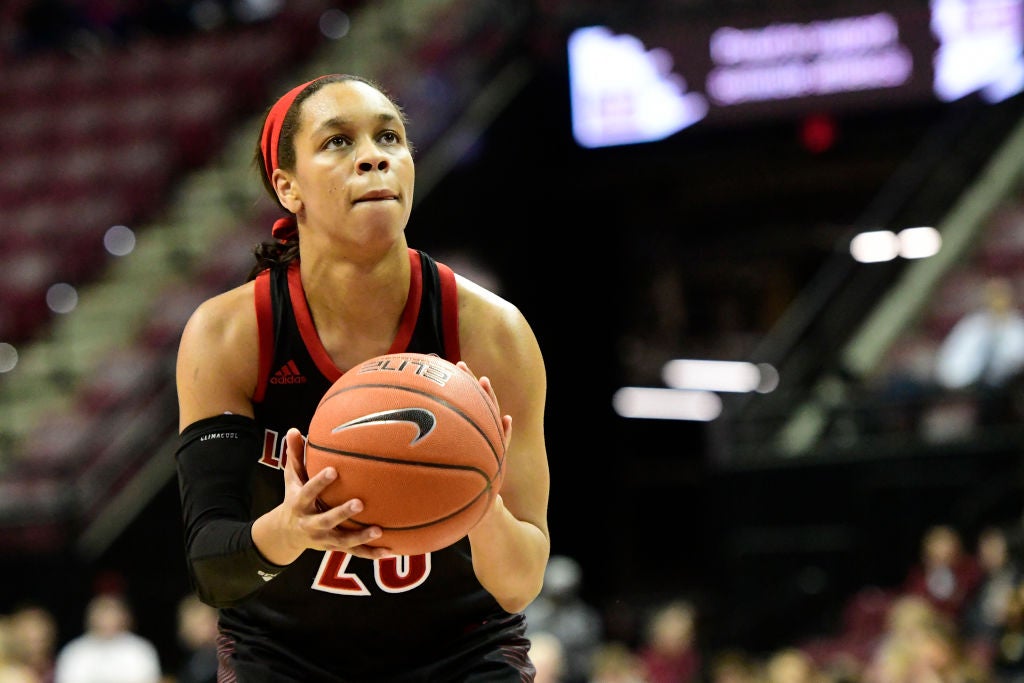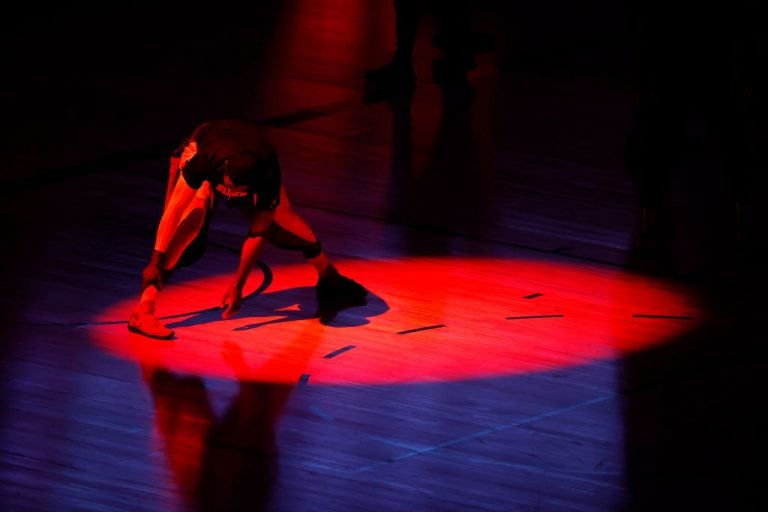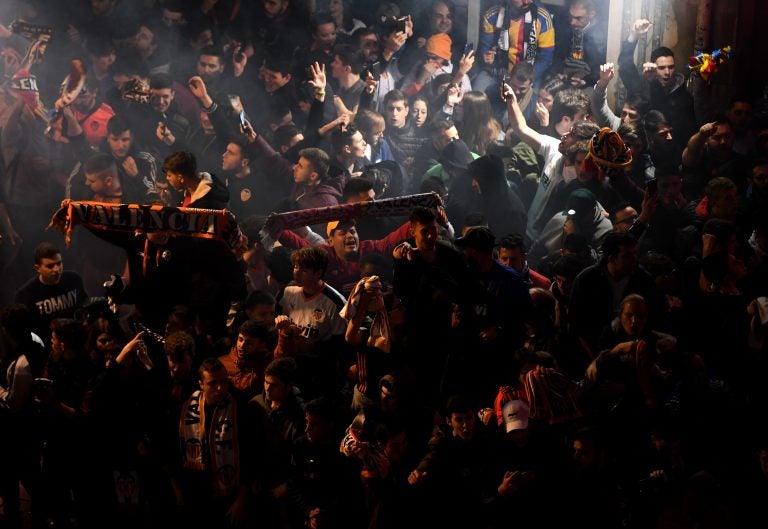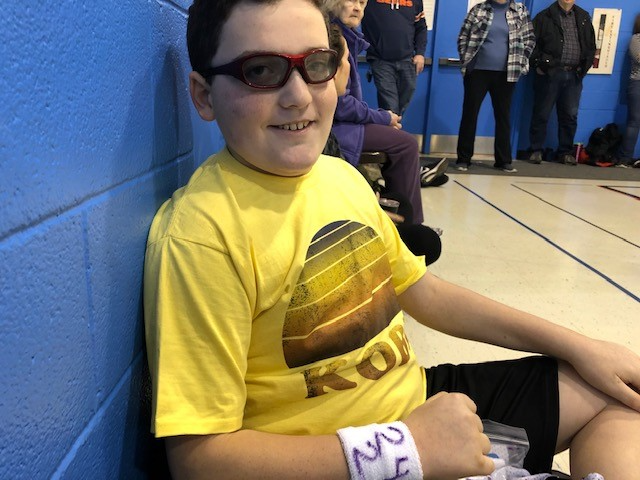‘I’m Going Backward’: How Athletes Are Dealing With the Uncertainty of Long Covid
Why this matters
Long COVID-19 figures to be one of the most long-lasting repercussions of the coronavirus pandemic, and with bodies that are monitored so deeply, athletes have become conduits for understanding the disease and its effects.
Austin Phyfe never did figure out exactly how he got COVID-19. Nor did he feel like he needed to know. It was June 2021, and Phyfe was not only fully vaccinated but also a rising redshirt junior for the men’s basketball program at the University of Northern Iowa. A two-time all-conference forward, he was a picture of health in the prime of his athletic career. COVID didn’t bother him much, and his symptoms were limited to a day or two of lost taste and smell. He thought it might’ve been early-summer allergies, but he went for a COVID test because, he says, “you never know anymore.”
At the time of his diagnosis, Phyfe had a COVID story that was typical of most college athletes – and of healthy 20-somethings in general. In mid-June, after 10 days of isolation, he entered UNI’s return-to-play conditioning program for athletes who had tested positive. It was a program that by design had a gradual buildup of athletic activity. “You have to work your way back into it a little bit,” Phyfe says. “They don’t wanna kill you.”
For the first few days, Phyfe struggled to catch his breath and move at his usual pace, a difficulty he chalked up to “lingering aftereffects that might clear.” Better days followed, providing encouragement that he was turning a corner. Only his progress wasn’t linear. There were bad days as well – and too many of them. Six weeks after his return, Phyfe found himself coming to grips with a new normal, one that was far from his pre-COVID baseline.
“I was progressing a little bit, but then just kind of hit a standstill, where nothing was really progressing,” he says. “It was still tough every day just to have that consistency of being able to go up and down for whatever it may be: three, four, five minutes. There were some days when I was feeling better, and there were some days when I was feeling worse.”
Asia Durr has had days like that, too. The No. 2 overall pick in the 2019 WNBA Draft by the New York Liberty, Durr tested positive for COVID in June 2020. Durr was never hospitalized, but the virus still made a mess of their life – and in ways that stretched well beyond feeling lousy for a few days: shortness of breath, brain fog, confusion, diarrhea, and lung pain. “Pretty much every symptom of COVID, that’s what I was experiencing,” Durr, who uses they/them pronouns, says now.
It dragged on for months. Durr, an off-ball guard out of Louisville who had averaged 10 points as a rookie, couldn’t play in 2020, their second season in the league. They thought for sure they’d play in 2021, but that became impossible.
“I felt like I lost who I was, just because everything was so new,” Durr says. “Basketball was taken away from me for an extended period of time, so I was forced to do other things. That wasn’t my go-to thing. I had to do some digging, and I had to really dig deep into basically just trying to fight through it. I was in a really bad place for quite some time.”
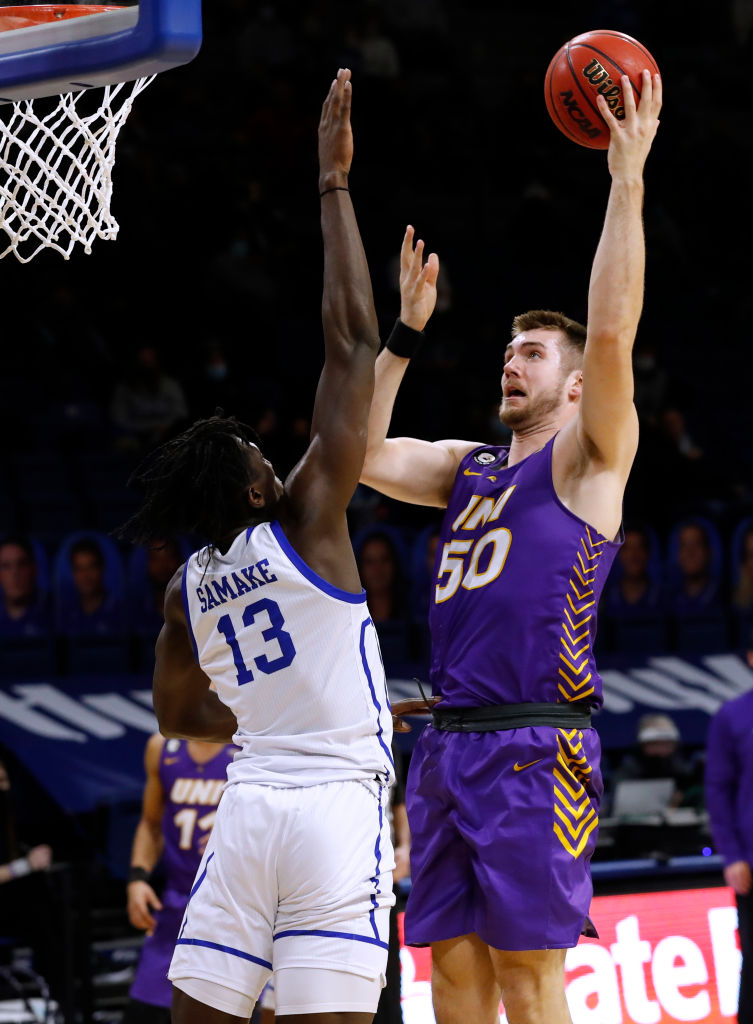
Phyfe’s and Durr’s experiences are microcosms of long COVID, a post-infection malaise that has hit an untold number of people in America and around the world. Estimates vary widely, from a few million cases in the United States to something like 100 million worldwide. One reason for the variance is that not everyone in the public health and medical communities is working off the same definition of “long COVID” in the first place.
“I think that it’s very hard for people to conceptualize long COVID, because it’s still a floating term even for the medical community, because we don’t have strict diagnostic criteria,” says Amesh Adalja, a senior scholar at the Johns Hopkins University Center for Health Security. “We don’t quite understand what the risk factors are.”
For our purposes, let’s use Adalja’s definition: Someone with long COVID is operating at less than full capacity in their daily life after contracting COVID-19, even (and perhaps especially) if their case did not threaten their life at the time they tested positive.
“When I use the term, it refers to people who have an episode of COVID -19 that wasn’t very severe – meaning they weren’t ICU patients – and are left with some deficiencies in their ability to perform their activities of daily life when compared to pre-infection,” he says.
Adalja emphasizes that he is not talking about a cough. He mentions two examples: an accountant who can no longer add multi-digit numbers quickly, or a person who can’t walk up stairs without huffing and puffing.
Doctors found scarring in Phyfe’s lungs, which prevented him from getting air as efficiently as he had before. Mostly, he feels fine when he’s not doing his daily work of playing basketball or training to play basketball. He says he’s living a happy life: “I don’t feel any tightness in my chest or anything just walking around. If I walk up a couple flights of stairs, I might be really winded, but nothing to the extent it is when I’m going up and down and playing basketball.”
Durr got only one diagnosis in the months after their positive COVID test: a case of bronchitis in July 2020, less than two months after they had tested positive. “But besides that, they couldn’t really tell what was really going on,” Durr says. “I was just super sick. Like, I was spitting up blood and all of that. They had run so many tests. They thought I had pneumonia. Turns out I didn’t.” It wasn’t until November 2020 that doctors at Mount Sinai Health, whom the Liberty had put Durr in touch with, were able to clarify things: Durr was a COVID long-hauler.
“They were able to explain to me, like, ‘This is why you feel that way. This is what this means,’ and stuff like that,” Durr says. “But it was still so new.”
Long COVID is a vexing beast, and not just because there’s not a scientific consensus on what causes it or how many people have or have had it. Long COVID also takes different forms, with a long list of symptoms that overlap with countless other maladies. Popular framing of COVID in athletes, to say nothing of long COVID, has trended toward opposite poles. Athletes will either get the virus out of their systems quickly and be fine, or, in rare cases, the virus will derail their careers.
In this way, the COVID discussion in sports mirrors the broader discussion in society: talk about how the virus poses little risk to “young, healthy” people, or talk about how lethal it can be for older or immunocompromised peers. Documented long COVID cases in sports have frequently sat in a vast middle ground between those two circumstances. Division II runner Natalie Hakala could run 800 meters in 2:17, but long COVID caused her to struggle to finish sentences and get winded walking to the couch. It ended, at least for the time being, the college volleyball career of Cleveland State’s Marissa Durand, whose heartbeat would rise to 190 beats per minute during basic acts like standing up or walking short distances. It caused Clemson defensive lineman Justin Foster to retire from football before returning in 2021. It wiped out two seasons for Durr, who got back into workouts only this winter.
“I’m much better now. I’m in a much better place,” Durr says. “I’m back working out now. I’m back training. My happiness is definitely back. I love the game of basketball. I’ve been playing it since I was three. As long as I have basketball, I’m good.”
In Phyfe’s case, his career has continued, but he’s playing 14 minutes per game instead of the 27 he averaged the previous two years. “I’m definitely very blessed that I’m not at the point where I had to be hospitalized or anything of that sort, and I’m still able to come to practice every day and do what I’m able to do,” he says. “But you wish it wasn’t happening.”
Phyfe will tell you over and over again how grateful he is that long COVID has not done more damage to his body, that he didn’t need a hospital stay, that he can play basketball at all. Still, there’s something uniquely unsettling about the in-between he has inhabited for months.
“It’s weird in a way, too, because you almost feel like those people that are hospitalized, they have — not answers — but they can give you a plan,” he says. “I’m kind of in that middle, where a lot of the stuff’s not really researched yet, and they’re not sure what they can really do to maybe get me over this point, or if it’s just time.”
The nebulous shape of long COVID, the apparent rarity of its occurrence in elite athletes, and the seeming randomness of whom it afflicts all make it virtually impossible for the sports world to come up with a solution – well, beyond taking reasonable precautions to prevent viral infection in the first place, which most leagues have attempted to do. No players union or athlete advocacy group has asked to stop seasons because of long COVID; for that matter, neither has the public health establishment. On the contrary, Adalja says that sports shouldn’t stop, that they can be a good example of how society can function responsibility as COVID (we can hope) moves toward endemicity.
But playing through a pandemic means that athletes can and will be infected. While there is no public data clearinghouse for COVID cases across sports, the majority of athletes seem to return to play within a week or two. That doesn’t mean they don’t experience aftereffects, too: In January, The Economist shared findings from a study of Italian and German soccer players who tested positive and subsequently played fewer minutes and completed fewer passes after returning to action.
Athletes with lingering COVID symptoms also face a psychological challenge. When a player tears a knee ligament, she understands it will likely be the better part of a year before she returns to game action. There is a long and well-documented history of injured athletes undergoing surgery and rehabilitation; doctors and patients alike know what to expect. By contrast, an athlete who gets COVID may think that they should be back in the lineup in a week or two. If symptoms linger, there is neither a timetable for recovery nor a roadmap for how to overcome them.
Related: Stanford Won a Championship During the Pandemic and Paid a Mental Health Price. What Can We Learn?
For highly skilled, highly trained young athletes who are used to pushing their physical limits, accepting that their bodies will heal in their own time and on their own terms can be difficult. “Well, with the individuals who had the significant symptoms, I think having COVID did that for us,” says Nathan Barger, the assistant athletic director in charge of sports medicine at the University of Tennessee at Chattanooga. “Them having COVID slowed the process down significantly. If they pushed it, they felt it, and they just didn’t feel it that day, that session. They felt it the next couple days. Our athletes figured out very quickly they had to respect their virus and respect the return-to-play protocol, because they could not just reassume their regular lives afterward. It was a slow progression, and it took a couple weeks.”
Phyfe does his best to cope with his body not doing what it did for him before COVID. He tries to be an enthusiastic veteran leader and to support the younger frontcourt players who are eating up the minutes he would usually play. It helps that UNI is a Missouri Valley Conference contender and has a shot to win the conference and a National Collegiate Athletic Association tournament bid this year. He has also tried to take advantage of his decreased conditioning, albeit in a roundabout way. Evidence of that is in his 63 percent free-throw shooting, several points higher than in either of his all-conference campaigns the past two years.
“I can’t do as much, so there’s a lot more breaks and that kind of stuff for me, when I’m doing those things,” he says. “I spend a lot more time at the free throw line and working on a couple more simple, basic types of things that I might not have done if this wasn’t happening.”
Durr, similarly, believes long COVID has created opportunities to improve: “I’m definitely gonna come out better than I was before, because I’ve gotten a chance to really work on things that I didn’t necessarily always have the time to dig deep and work on, as far as my body and stuff like that. I’m gonna be in even better shape than I was before, mentally and physically.”
Of course, there’s a caveat. “It’s definitely not gonna come overnight,” Durr says.
For a while, Phyfe thought that he could simply overpower what COVID did to him, the same way he had overpowered opponents and other hard things en route to receiving a college scholarship and becoming one of the best players in a Division I league.
“I mean, for a month or two, it was something just like, ‘OK, this sucks. I’m gonna keep pushing through it,’” he says. “After a couple months, you almost get to that point where you’re just tired of it every day. You’re coming to practice knowing that every 10, 15 minutes you’re going to get that out-of-breath feeling.”
It can be a deep hole. Don Bishop, UNI’s director of athletic training services, more or less tries to climb into the hole with Phyfe and other athletes struggling with their rehabs. “I try to put a personal caring approach in each case so they know I want them back as quickly as possible,” he says. “I want them to know I truly care and have their best interest at heart. It's imperative they trust the process and have faith and ownership in what we are doing and it's a team effort.”
COVID has already changed sports medicine forever. Bishop worries about burnout among sports doctors and trainers who are, in their own setting, on a pandemic front line. Barger expects that an increased emphasis on sanitizing and other elements of COVID-era hygiene, like working out or getting treatment in smaller groups than before, will never go away.
Related: ‘A Big Struggle’: In Retirement, Athletes Can Face a Jarring Physical Transition
It is not clear how rates of long COVID in athletes compare to rates in the general population. A key difference between those groups is that athletes tend to have excellent, team-provided health care – coverage that usually ends when their athletic careers do. Because long COVID is both new and murky, there is much uncertainty about how health care providers and insurers will treat it in the future and about who will pay for that. If Phyfe’s scarred lungs produce lifelong breathing difficulties and require expensive treatment after his playing career, for instance, what will that mean? “I’ve definitely thought about it,” he says.
Phyfe speaks effusively about the doctors and trainers who’ve worked with him at UNI. But he won’t be there forever. His long COVID, he hopes, won’t persist, either. He has yet to decide if he’ll exercise an extra year of eligibility for the 2022-23 season. “Even if it would maybe, potentially end my basketball career, if it would stay with me, I’d still be able to live what looks like a long and happy life,” he says.
For now, the next step for Phyfe is the same every day: trying to get a little bit closer to his old self, with the understanding that his body might have its own ideas. He talks with his head coach, Ben Jacobson, about how much he can do in a given game, and Jacobson monitors the flow of the action to see where Phyfe fits best. In the season opener in November, that meant 32 minutes. Two days before Christmas, it meant 28. In UNI’s next handful of games, up until the day we talked, it meant four minutes, then one, then various counts between nine and 18. Up and down, up and down, just like life with long COVID.
Adalja, the Hopkins senior scholar, says that a person’s “psychological resiliency” and ability to cope with their medical situation influences how much that person can push. “There’s not a one-size-fits-all type of prescription that you give patients for how to get back to their baseline with long COVID, because we’re just at the infancy of understanding this,” he says.
There’s no best way to deal with it. There are barely even best practices, because so much depends on individual factors. For his part, Phyfe has found one answer has been to focus less on what long COVID took from him than on what it didn’t. “It could be a lot worse. I’m still out here living my dream, playing Division I basketball,” he says. “Might not be playing the amount of minutes that I have in the past or that I’d like to, but I’m still able to live out my dream. So why not have a smile on my face?”
Durr started working out again this winter. They don’t like timelines, because timelines have burned them before. (“I did that last year: ‘By January of 2021, I’m gonna be good,’” they remember thinking.) But Durr strongly believes that a return is coming – and soon.
“I’m just taking it one day at a time. But I am making progress each day,” Durr says. “If I take a day off, I still make progress, and that’s something that the people in my close circle had to tell me, because at first, if I wasn’t able to work out one day, I would get upset, because it’s like, ‘Damn, man, I’m going backward.’
“But I’m actually not going backward. I don’t necessarily have a timeline. I just feel good about where I’m at, and I know for sure I'll be playing this year, because I’m headed in the right direction.”
Monthly Issue
Sport & the Body
The body is the most fundamental component of sport, capable of unthinkable feats and requiring considerable care. Athletes continually push their bodies to the brink in order to excel at their craft, and the 21st century has brought about a reimagining of the limits of physical ability.
Yet as the world of sport intensifies its focus on the body, athletes are demanding better care, more freedom, and increased flexibility around how they maintain and shape theirs.

